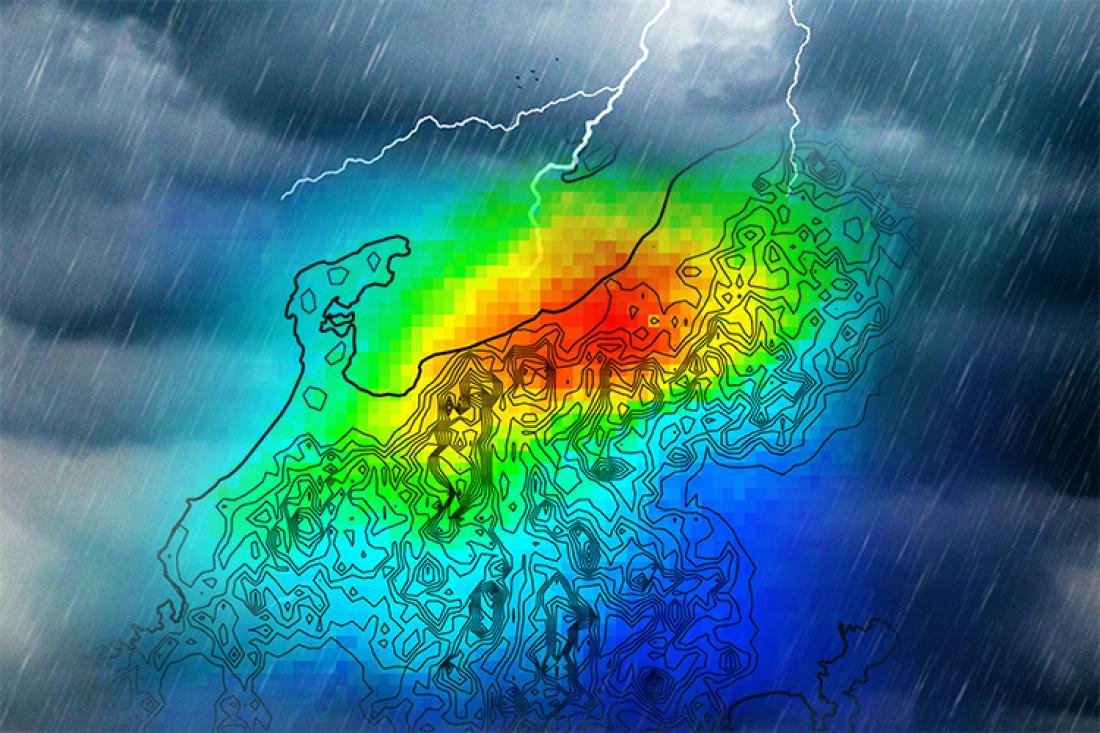Kashiwa, Japan – Understanding the timing and scale of local precipitation is crucial for managing water resources. In a recent study, researchers from the Institute of Industrial Science, The University of Tokyo, developed a method that can provide more accurate predictions of local precipitation, using a novel machine-learning approach.
Precipitation can vary enormously in time and space. Large-scale weather systems, such as cold and warm fronts, interact with local topography and other physical processes to produce local variations in rainfall patterns. Small changes in atmospheric conditions, for example winds, can also significantly influence local precipitation.
Management of water resources and planning for water-related disasters require accurate estimates of local precipitation. Numerical models are typically used to produce these estimates but these models are prone to errors. Most models do not take into account all the complex processes that affect precipitation, nor do they have sufficiently high resolution.
“Bias correction methods can be used to improve the performance of numerical precipitation models,” says lead author of the study,Takao Yoshikane. “Various methods have been used but most of these focus on daily or monthly rainfall patterns. We wanted to develop a method that could produce accurate estimates of hourly local precipitation.”
To do this, the researchers used a machine-learning method that recognizes the complex relationships involved in local precipitation. Using meteorological data for a 113 km2 area in Japan, observed precipitation was compared with simulated data and then a technique called quantile mapping was used to modify the estimates produced. This method modified the spatial distribution estimates of hourly precipitation to reflect local conditions.
“Using these methods, we were able to reproduce the long-term spatial distribution of local precipitation with high accuracy,” explains Yoshikane. “Accurate estimates of precipitation systems at scales of 2500 to 40,000 km2 were produced, which include large-scale weather systems such as warm and cold fronts, and low-pressure systems. These were closely tied to local precipitation.”
Understanding local precipitation patterns is vital for planning, both in terms of management of water resources and response to hazards, such as flooding events. This new method provides a promising approach for better precipitation estimates and, ultimately, improved water management.
###
The article, “A bias correction method for precipitation through recognizing mesoscale precipitation systems corresponding to weather conditions,” was published in PLOS Water at DOI: 10.1371/journal.pwat.0000016
About Institute of Industrial Sciene, The University of Tokyo
The Institute of Industrial Science, The University of Tokyo (UTokyo-IIS) is one of the largest university-attached research institutes in Japan. Over 120 research laboratories, each headed by a faculty member, comprise UTokyo-IIS, which has more than 1,200 members (approximately 400 staff and 800 students) actively engaged in education and research. Its activities cover almost all areas of engineering. Since its foundation in 1949, UTokyo-IIS has worked to bridge the huge gaps that exist between academic disciplines and real-world applications.



